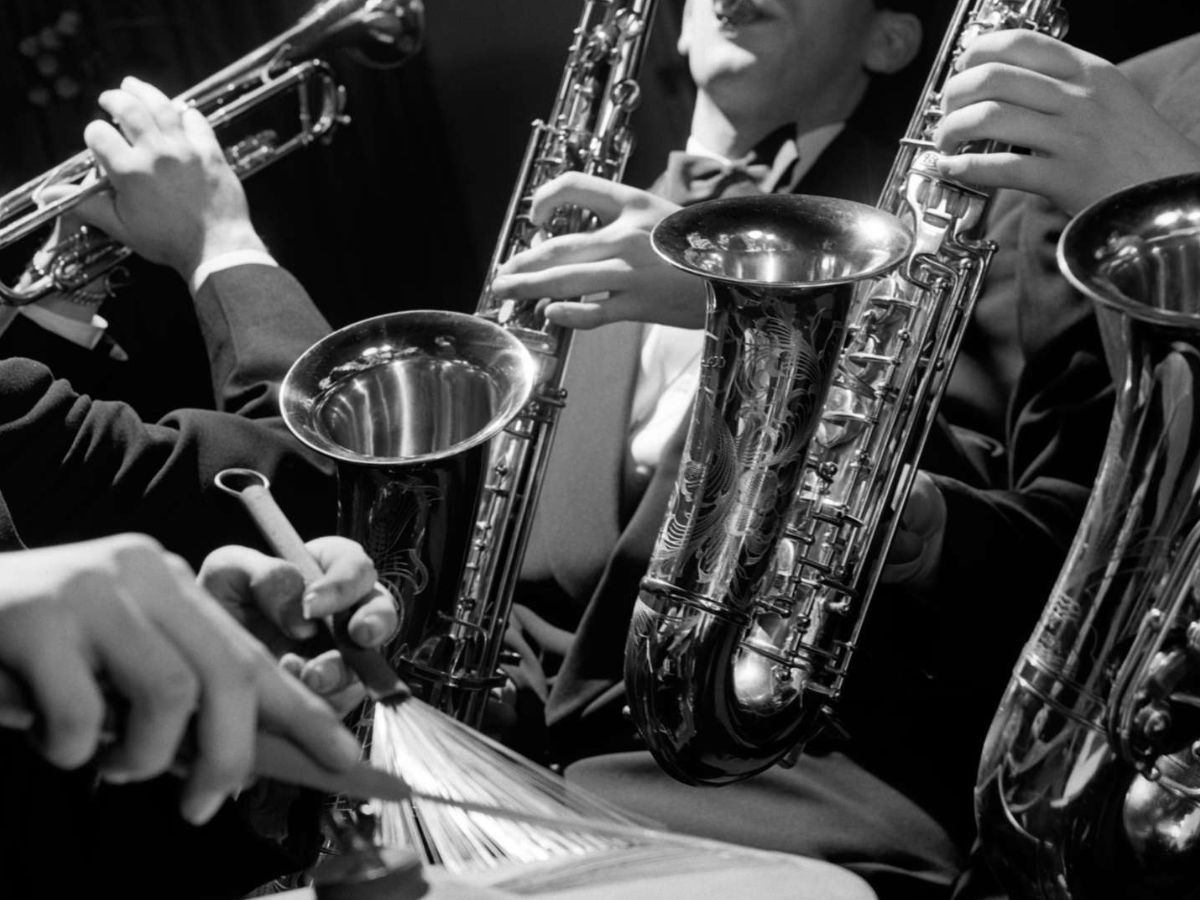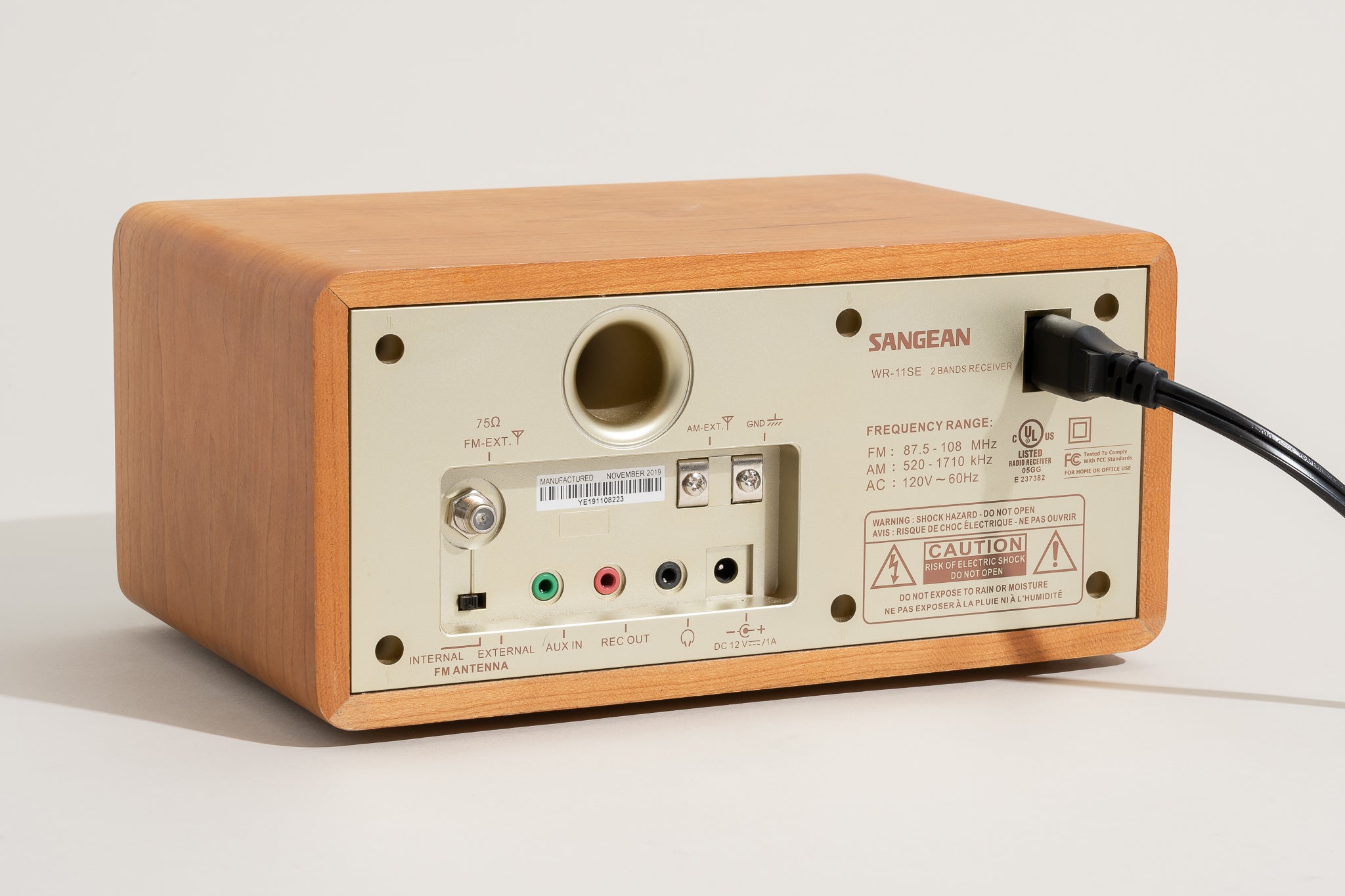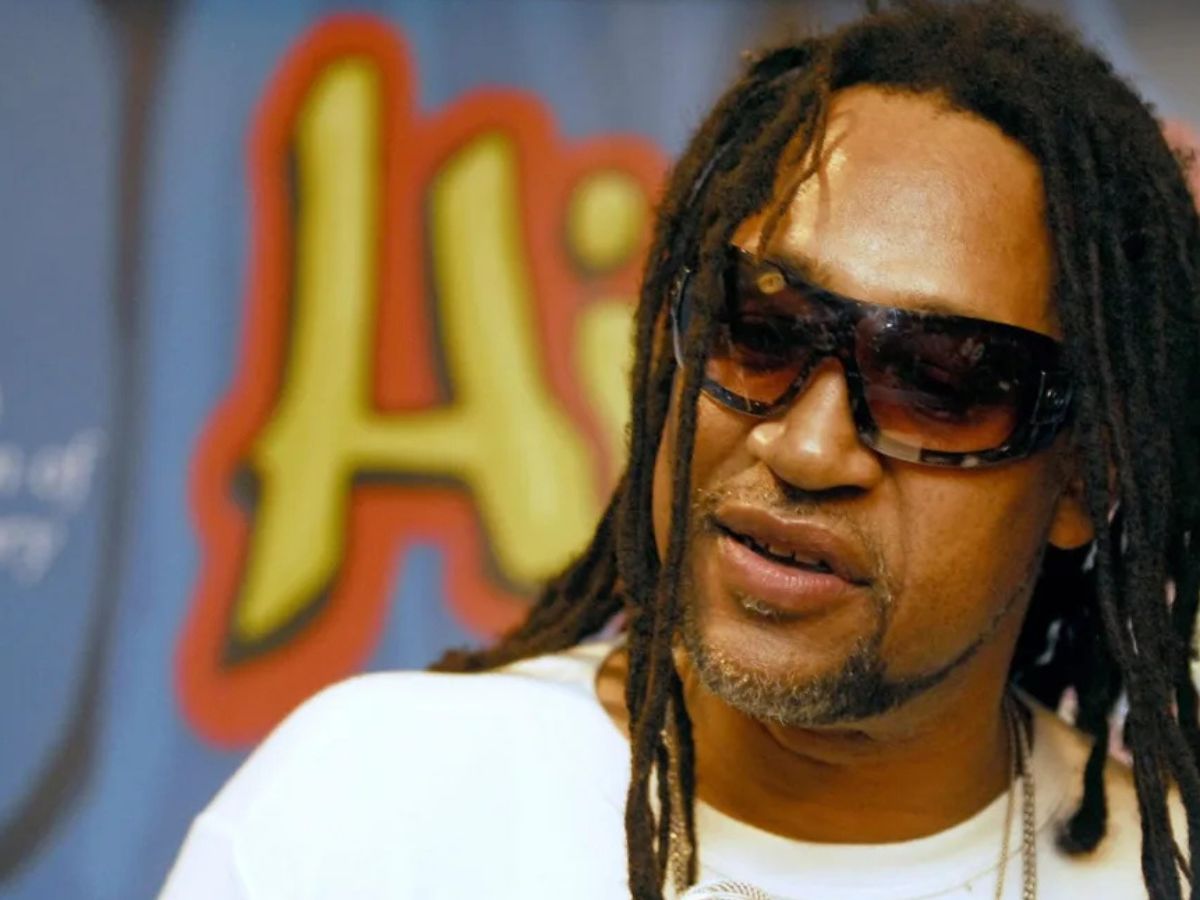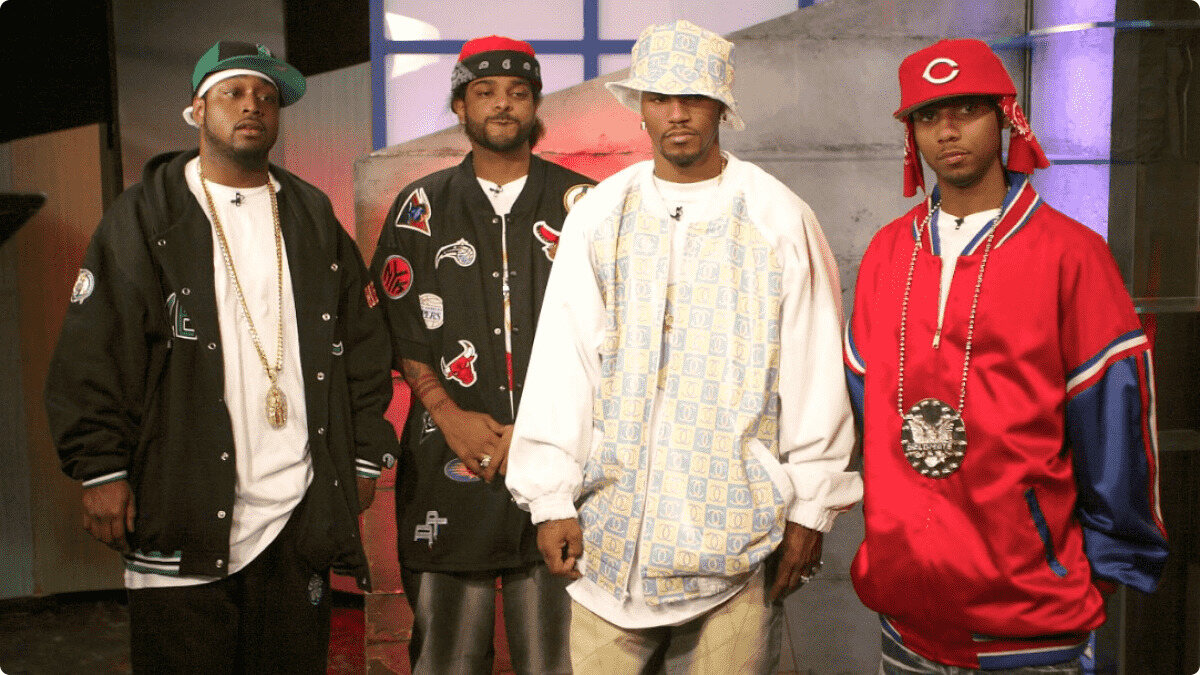Home>Genres>Hip Hop>Why Was Jazz Sampled So Heavily In Hip Hop


Hip Hop
Why Was Jazz Sampled So Heavily In Hip Hop
Modified: January 22, 2024
Discover why jazz has been a significant influence in hip hop, as we explore the heavy sampling trend and its impact on the genre. Uncover the seamless fusion of these two musical styles.
(Many of the links in this article redirect to a specific reviewed product. Your purchase of these products through affiliate links helps to generate commission for AudioLover.com, at no extra cost. Learn more)
Table of Contents
- Introduction
- Historical Context of Jazz and Hip Hop
- Musical Similarities between Jazz and Hip Hop
- The Influence of Jazz on the Early Days of Hip Hop
- Sampling in Hip Hop: Definition and Importance
- Jazz as a Sample Source in Hip Hop Music
- Examples of Jazz Samples in Hip Hop Songs
- The Impact and Legacy of Jazz Sampling in Hip Hop
- Criticism and Controversy Surrounding Jazz Sampling in Hip Hop
- Conclusion
Introduction
Hip hop and jazz – two genres of music that, on the surface, may seem fundamentally different. Hip hop, with its urban roots and emphasis on spoken word poetry, and jazz, with its rich history and complex instrumentation, may appear to have little in common. However, a closer look reveals a deep interconnection between the two genres.
Jazz, often hailed as America’s classical music, emerged in the early 20th century and quickly became a cultural phenomenon. With its improvisational nature and emphasis on individual expression, jazz represented a break from traditional musical conventions. Meanwhile, hip hop, born in the streets of the Bronx in the 1970s, acted as a voice for marginalized communities, with artists using rap as a means to express their experiences and emotions.
While jazz and hip hop have their own distinct characteristics, they share a common thread of creativity, innovation, and rebellion. It is this connection that has led to jazz being heavily sampled in hip hop music. Sampling, a technique where small snippets of existing music are incorporated into new compositions, has played a significant role in shaping the sound of hip hop.
In this article, we will explore the historical context of jazz and hip hop, dissect the musical similarities between the two genres, and dive into the influence of jazz on the early days of hip hop. We will also examine the concept of sampling in hip hop and discuss how jazz has served as a rich source of samples in countless hip hop tracks. Finally, we will explore the impact and legacy of jazz sampling in hip hop music, as well as the criticism and controversy that surround this practice.
So grab your headphones, turn up the volume, and prepare to explore the deep connection between jazz and hip hop. It’s a journey that will take us through the decades and shed light on the artistic fusion that has shaped the music we love today.
Historical Context of Jazz and Hip Hop
To understand the significance of jazz sampling in hip hop music, it’s important to delve into the historical context of both genres.
Jazz originated in the early 20th century, primarily in African-American communities in New Orleans. It emerged as a fusion of African rhythms, European harmony, and improvisational styles. This genre quickly gained popularity and began to spread across the United States, becoming a prominent part of American cultural identity.
At the same time, in the 1970s, in the poverty-stricken neighborhoods of the South Bronx, hip hop was being born. Hip hop, a socio-cultural movement, encompassed four main elements: rap, DJing, graffiti art, and breakdancing. It provided a creative outlet for marginalized communities and served as a form of self-expression and cultural resistance.
While jazz and hip hop may have emerged in different eras and contexts, they both share common elements of rebellion, innovation, and a deep connection to African-American culture. Jazz challenged the norms of the time by introducing improvisation and individual expression, while hip hop challenged societal injustices and provided a platform for unheard voices.
The historical context of both genres sets the stage for their eventual intersection. As hip hop evolved and gained popularity, artists began to explore new ways to create unique sounds and beats. This exploration led to the practice of sampling, where small portions of pre-existing recorded music were incorporated into new compositions.
Jazz, with its wide range of instrumentation and complex chord progressions, provided a treasure trove of possibilities for hip hop artists looking to add depth and sophistication to their tracks. The rich legacy of jazz music became a source of inspiration, allowing artists to pay homage to the pioneers who came before them while adding their own unique spin.
Thus, the historical context of jazz and hip hop laid a solid foundation for the eventual collaboration between the two genres. Jazz sampling became a way for hip hop artists to bridge the gap between the past and present, creating a new artistic landscape where old and new sounds could coexist harmoniously.
Musical Similarities between Jazz and Hip Hop
While jazz and hip hop may appear to be vastly different genres on the surface, they share a surprising number of musical similarities. These musical parallels have played a crucial role in the integration of jazz into the fabric of hip hop.
Both jazz and hip hop emphasize rhythm as a foundational element of their respective styles. In jazz, intricate rhythms and syncopation create a playful and dynamic groove. Similarly, hip hop beats are built on powerful, head-nodding rhythms that drive the energy of the music forward. The rhythmic complexity and swing of jazz directly influenced the rhythmic patterns found in hip hop, allowing artists to create infectious and captivating grooves.
Another shared characteristic is the emphasis on improvisation. In jazz, musicians often engage in spontaneous improvisation during solos, showcasing their individual skills and creativity. The improvisational nature of jazz allows musicians to interpret and reinterpret melodies and harmonies in real-time, creating a truly unique musical experience. Similarly, hip hop artists excel at spontaneous lyrical improvisation, freestyling rhymes that reflect their personal experiences and thoughts. This shared affinity for improvisation creates a sense of spontaneity and freshness in both genres.
Harmony also plays a vital role in both jazz and hip hop. Jazz is known for its sophisticated harmonic structures, often featuring intricate chord progressions and complex tonalities. Hip hop embraces harmony in a different way, with producers crafting beats that feature harmonic layers and samples that add depth to the music. Jazz’s influence on hip hop can be heard in the choice of chords and progressions, elevating the harmonic complexity of hip hop tracks.
Furthermore, both genres have a tradition of storytelling. In jazz, instrumentalists use their instruments to convey narratives and emotions, evoking powerful feelings within the listener. Hip hop, on the other hand, utilizes rap as a storytelling medium, with artists sharing their personal stories and experiences through their lyrics. This shared emphasis on storytelling allows for a deeper connection between the artist and the audience, fostering a sense of shared experiences and empathy.
Lastly, both jazz and hip hop thrive on collaboration and improvisational interaction. In jazz, musicians engage in musical conversation, taking turns to play solos and respond to each other’s musical ideas. Similarly, within the hip hop community, collaborations between artists and producers are common, with each individual bringing their unique style and skills to the table. The essence of collaboration and improvisational interaction in both genres allows for artistic growth and the development of new musical ideas.
These musical similarities between jazz and hip hop provide the foundation for their integration. The shared rhythmic sensibilities, improvisation, harmonic complexity, storytelling, and collaborative nature serve as the building blocks for the fruitful fusion of jazz and hip hop.
The Influence of Jazz on the Early Days of Hip Hop
The early days of hip hop were a period of innovation and experimentation, where artists were constantly pushing the boundaries of the genre. During this time, jazz played a significant role in shaping the sound and style of hip hop, leaving a lasting impact on the emerging culture.
One of the key ways in which jazz influenced hip hop was through its emphasis on improvisation. In the early days of hip hop, DJs would manipulate vinyl records, creating seamless mixes and incorporating live scratching techniques. This improvisational approach mirrored the spirit of jazz musicians, who would often take extended solos and engage in extended improvisation sessions. The DJs’ ability to mix and scratch records allowed them to manipulate the music on the fly, adding a layer of creativity and spontaneity to the hip hop sound.
Another aspect of jazz that influenced early hip hop was its attitude of rebellion and cultural resistance. Jazz was often seen as music for the marginalized and the oppressed, offering a form of creative expression that challenged societal norms. Similarly, hip hop emerged as a platform for expressing the realities and struggles of inner-city communities, acting as a voice for the underrepresented. This shared spirit of rebellion and social commentary in jazz and hip hop resonated deeply with audiences, allowing for a seamless integration of the two genres.
Jazz also provided a source of inspiration for early hip hop artists in terms of musicality and composition. Jazz compositions often featured complex chord progressions, intricate melodies, and rich harmonies. Hip hop producers would sample these elements from jazz records, incorporating them into their beats and arrangements. The use of jazz samples allowed hip hop artists to infuse their music with a sophisticated and refined sound, adding depth and texture to their tracks.
Furthermore, jazz’s influence on hip hop extended to the realm of live performances. Jazz musicians were renowned for their captivating stage presence and improvisational skills, often engaging in energetic call-and-response interactions with the audience. Hip hop artists incorporated similar techniques into their live shows, interacting with the crowd, responding to their energy, and creating a sense of connection and engagement.
Overall, the influence of jazz on the early days of hip hop cannot be understated. Jazz provided the foundation for hip hop’s improvisational nature, its rebellious spirit, and its musicality. Through sampling, jazz fused with hip hop, creating a new sonic landscape that paid homage to the past while pushing towards the future.
Sampling in Hip Hop: Definition and Importance
Sampling is a fundamental technique in hip hop music that involves taking snippets or sections of pre-existing audio recordings and incorporating them into new compositions. This practice has had a profound impact on the development and evolution of hip hop, shaping its unique sound and style.
In essence, sampling allows hip hop artists and producers to pay homage to their musical influences and bridge the gap between different eras and genres. By extracting segments from older recordings, artists can incorporate the nostalgia and familiarity of the past into their own creations. This connection to the roots of music adds a layer of depth and authenticity to hip hop tracks.
Sampling also allows for a unique form of creativity and innovation within hip hop. It provides a vast palette of sounds and textures for artists to work with, enabling them to create entirely new musical compositions by recontextualizing and reimagining existing material. Sampling can include anything from melodies and drum breaks to vocal lines and sound effects, providing endless possibilities for artistic expression.
The importance of sampling in hip hop goes beyond musical aesthetics. It serves as an important tool for cultural preservation and storytelling. By sampling music from different eras, regions, and cultures, hip hop artists highlight the interconnectedness and shared history of music. They can shine a spotlight on the contributions of lesser-known artists or genres, bringing them into the mainstream consciousness and giving them new life.
Sampling has also played a significant role in shaping the identity of hip hop as a genre. It has contributed to the development of distinctive production styles and techniques, allowing for the creation of instantly recognizable beats and sounds. Sample-based production has become synonymous with hip hop, allowing for the blending of diverse musical elements and the constant evolution of the genre.
However, it is important to note that sampling in hip hop has also raised ethical and legal concerns. The use of copyrighted material without permission or proper clearance can lead to legal disputes and copyright infringement claims. As a result, strict regulations and licensing processes have been put in place to ensure fair compensation for original creators.
Overall, sampling has become an integral part of hip hop’s creative process, enabling artists to pay homage to their musical influences, create innovative compositions, preserve cultural heritage, and shape the distinct sound of the genre. It continues to be a driving force in the ever-evolving landscape of hip hop music.
Jazz as a Sample Source in Hip Hop Music
Jazz has emerged as one of the most prominent sources of samples in hip hop music. The rich legacy of jazz recordings serves as a treasure trove for hip hop producers, providing them with a vast array of musical elements to incorporate into their tracks.
One of the main reasons why jazz has become a popular sample source in hip hop is its sheer musicality. Jazz compositions often feature complex chord progressions, nuanced melodies, and intricate rhythms that add a layer of sophistication to hip hop beats. By sampling jazz recordings, hip hop producers can infuse their tracks with the timeless elegance and emotional depth that jazz is known for.
Moreover, jazz instrumentation offers a wide range of possibilities for hip hop artists. The use of jazz horns, such as trumpets and saxophones, can bring a melodic and atmospheric quality to hip hop tracks. The rhythmic elements from jazz drumming can add a dynamic and groovy feel to the beat. Additionally, jazz pianos and basslines can contribute to the harmonic complexity and depth of the music. These elements provide hip hop producers with a canvas on which they can paint their artistic vision.
Sampling from jazz records also allows hip hop artists to pay tribute to the influential jazz musicians who paved the way. It serves as a bridge between generations, connecting the past and present of music. By incorporating jazz samples, hip hop artists not only honor the artistic contributions of jazz legends, but they also introduce younger generations to the beauty and significance of jazz music.
Furthermore, the use of jazz samples adds a sonic diversity to hip hop. It brings a fusion of different genres, as jazz itself has been influenced by various styles such as blues, soul, and Latin music. The integration of these diverse elements into hip hop creates a unique and eclectic sound, pushing the boundaries of the genre and allowing for continuous experimentation and innovation.
Some iconic jazz samples in hip hop include A Tribe Called Quest’s use of saxophonist Ronnie Laws’ “Tidal Wave” in their track “Can I Kick It?”, or the sample of pianist Ahmad Jamal’s “Swahililand” in De La Soul’s “Stakes Is High”. These examples highlight how jazz samples have been skillfully utilized to enhance the musicality and vibe of hip hop songs.
Overall, the use of jazz as a sample source in hip hop music showcases the timeless appeal and versatility of jazz. It allows for the blending of genres and the creation of unique sonic landscapes. Jazz’s influence on hip hop has not only enriched the musical complexity of the genre but has also helped to preserve and celebrate the legacy of jazz music.
Examples of Jazz Samples in Hip Hop Songs
The utilization of jazz samples in hip hop music has become a staple of the genre, with countless tracks showcasing the marriage of these two influential styles. From the early days of hip hop to the present, sampling jazz recordings has allowed artists to create unique and captivating compositions. Here are a few notable examples of jazz samples in hip hop songs:
- A Tribe Called Quest – “Can I Kick It?”: This iconic track from A Tribe Called Quest’s debut album samples saxophonist Ronnie Laws’ “Tidal Wave.” The laid-back jazz groove, accompanied by Q-Tip’s smooth flow, creates a timeless blend of jazz and hip hop.
- Pete Rock & C.L. Smooth – “They Reminisce Over You (T.R.O.Y.)”: One of the most revered hip hop songs of all time, “They Reminisce Over You” samples jazz trumpeter Tom Scott’s “Today.” The nostalgic vibe and poetic storytelling make it a quintessential example of how jazz samples can enhance the emotion and impact of a hip hop track.
- Gang Starr – “Jazz Thing”: As the title suggests, this track by Gang Starr pays homage to jazz music. Sampling the classic “Theme from Enter the Dragon” by legendary jazz pianist Herbie Hancock, “Jazz Thing” captures the essence of jazz improvisation and combines it with the raw energy of hip hop.
- Us3 – “Cantaloop (Flip Fantasia)”: This chart-topping hit by Us3 samples jazz trumpeter Freddie Hubbard’s “Cantaloupe Island.” The infectious combination of catchy jazz piano riffs, hip hop beats, and rap vocals showcases the seamless integration of jazz elements into a hip hop context.
- Guru – “Loungin’”: Guru, the late rapper from Gang Starr, incorporates a smooth jazz sample in “Loungin’.” The track samples saxophonist Donald Byrd’s “A Little Taste of Soul” and blends it with Guru’s introspective lyrics, effortlessly fusing jazz and hip hop.
- Common – “The Light”: Showcasing the versatility of jazz samples, Common’s “The Light” samples soul-jazz pianist Bobby Caldwell’s “Open Your Eyes.” The soulful and melodic jazz sample beautifully complements Common’s introspective lyrics, creating a timeless hip hop classic.
- Kendrick Lamar – “For Free? (Interlude)”: Kendrick Lamar’s critically acclaimed album “To Pimp a Butterfly” features the track “For Free? (Interlude),” which samples jazz musician Ahmad Jamal’s “The Awakening.” The use of this jazz sample adds a layer of sophistication and musicality to Lamar’s introspective and thought-provoking lyrics.
These examples are just a glimpse into the vast landscape of jazz samples in hip hop music. They highlight the diverse ways in which hip hop artists have utilized jazz recordings to create innovative and captivating compositions. From instrumentals to vocals, jazz samples have become an integral part of hip hop’s sonic identity, connecting the past with the present and pushing the boundaries of musical creativity.
The Impact and Legacy of Jazz Sampling in Hip Hop
The impact of jazz sampling in hip hop cannot be overstated. This artistic fusion has left an indelible mark on the music landscape, shaping the sounds, styles, and cultural significance of both genres. The legacy of jazz sampling in hip hop is a testament to the power of musical evolution and the enduring influence of jazz.
One of the key impacts of jazz sampling in hip hop is the expansion of musical boundaries. Jazz samples have allowed hip hop artists to create complex, layered compositions that incorporate a wide range of musical elements. This blending of genres has sparked innovation and creativity, pushing hip hop into new sonic territories and challenging traditional notions of what defines a genre.
Jazz sampling has also helped preserve the legacy of jazz music and introduce it to new generations. By incorporating jazz samples into hip hop, younger audiences have been exposed to the timeless beauty and cultural significance of jazz, revitalizing interest in the genre. This cross-generational connection has ensured the continued relevance and appreciation of jazz music, while simultaneously elevating hip hop’s artistic depth.
The legacy of jazz sampling in hip hop can be seen in the enduring popularity of classic hip hop tracks that have incorporated jazz samples. These songs have become iconic and influential, serving as touchstones for future generations of hip hop artists. They have inspired countless producers and artists to explore the rich jazz catalogue, fueling a continuous cycle of innovation and reinvention.
Moreover, jazz sampling has created a sense of nostalgia and familiarity in hip hop music. The use of jazz samples connects hip hop to its roots, paying homage to the pioneers who paved the way. It evokes a sense of timelessness, allowing hip hop artists to carry forward the legacies of jazz legends while adding their own unique voices to the musical conversation.
While jazz sampling has undoubtedly had a positive impact on hip hop, it has also sparked debates regarding artistic integrity and copyright issues. The use of copyrighted material without proper clearance has led to legal disputes and challenges. However, these challenges have also prompted discussions surrounding intellectual property rights and fair compensation for original creators.
Overall, the impact and legacy of jazz sampling in hip hop have been profound. It has transformed the musical landscape, expanded genre boundaries, preserved jazz traditions, and helped shape the identity of hip hop as a genre. The fusion of jazz and hip hop has cemented a powerful and enduring connection between two influential forms of music, leaving a lasting impact on the history and evolution of popular music.
Criticism and Controversy Surrounding Jazz Sampling in Hip Hop
While jazz sampling has played a significant role in the evolution of hip hop music, it has not been without criticism and controversy. The practice of sampling raises several ethical, legal, and artistic concerns that have sparked debates within the music industry and among listeners.
One of the main criticisms leveled against jazz sampling in hip hop is the issue of copyright infringement. Sampling involves using portions of copyrighted recordings without proper authorization or licensing. This has led to legal battles and disputes between artists, producers, and copyright holders. Critics argue that unauthorized sampling undermines the rights of original creators and denies them fair compensation for their work.
Additionally, there is a concern that excessive sampling can lead to a lack of originality and creativity in hip hop music. Some argue that relying heavily on sampling inhibits the development of unique musical ideas and stifles artistic growth. They believe that hip hop artists should focus on creating original compositions, rather than relying on the work of others to construct their tracks.
Another critique of jazz sampling in hip hop is the potential for cultural appropriation. Jazz, with its deep roots in African-American history and culture, has been instrumental in giving voice to marginalized communities. Critics argue that sampling jazz without providing proper context or recognition perpetuates a cycle of exploitation and erasure of the origins and struggles of jazz musicians.
Furthermore, the commercialization of jazz samples in hip hop has also attracted criticism. Some argue that the use of recognizable jazz samples can result in commodification and dilution of the original artistic intent. This criticism centers around concerns that the original spirit and integrity of the jazz recordings may be diminished when used solely for commercial gain in hip hop tracks.
Despite the controversies surrounding jazz sampling in hip hop, many argue that it has opened up new avenues for creativity and cultural exchange. Proponents argue that sampling provides a means for hip hop artists to pay homage to their musical influences and to create new compositions that bridge the gap between eras and genres. They believe that sampling can be a powerful tool for artistic expression, allowing for the reimagining and reinterpretation of existing sounds.
Ultimately, the criticism and controversy surrounding jazz sampling in hip hop highlight the complex and multifaceted nature of the practice. These debates raise important questions about intellectual property rights, artistic integrity, and cultural appropriation. Balancing the desire for artistic freedom and innovation with the need to respect original creators’ rights remains an ongoing challenge in the ever-evolving landscape of music.
Conclusion
The integration of jazz sampling into hip hop music has had a profound and lasting impact on both genres. The seamless fusion of these two influential styles has driven artistic innovation, expanded musical boundaries, and preserved the legacies of jazz musicians. However, the practice of jazz sampling in hip hop has not been without its controversies and criticisms.
Jazz sampling has allowed hip hop artists to create compositions that bridge the gap between different eras and genres, paying homage to the rich history of jazz while adding their own unique voices to the musical conversation. The use of jazz samples has brought a sense of sophistication, musicality, and nostalgia to hip hop, enhancing its depth and appeal.
Despite the critical debates surrounding copyright infringement, artistic integrity, and cultural appropriation, sampling in hip hop continues to push the boundaries of creativity. It has become an integral part of the genre’s DNA, inspiring countless producers and artists to explore the vast catalogue of jazz recordings.
The impact and legacy of jazz sampling in hip hop extend beyond the confines of the music itself. It represents a cultural exchange that links generations, genres, and communities. By incorporating jazz samples, hip hop has revitalized interest in jazz and introduced younger audiences to the timeless beauty and significance of the genre.
While challenges exist regarding intellectual property rights and ensuring fair compensation for original creators, the integration of jazz sampling in hip hop represents a unique blend of creativity, cultural expression, and musical evolution. It bridges the gap between the past and present, showcasing the interconnectedness and shared history of music.
As jazz sampling in hip hop continues to inspire and shape the future of both genres, it is essential to foster conversations that explore the ethical and legal dimensions of sampling, while also celebrating the transformative power of artistic fusion. The complexities surrounding jazz sampling in hip hop reflect the ongoing dialogue within the music industry and the wider creative community.
In conclusion, jazz sampling has become a defining characteristic of hip hop, enabling artists to weave together the past and the present to create music that is both nostalgic and forward-thinking. The synergistic relationship between jazz and hip hop illustrates the deep connections and rich cross-pollination that can occur between genres, leaving a lasting impact on the ever-evolving landscape of music.











